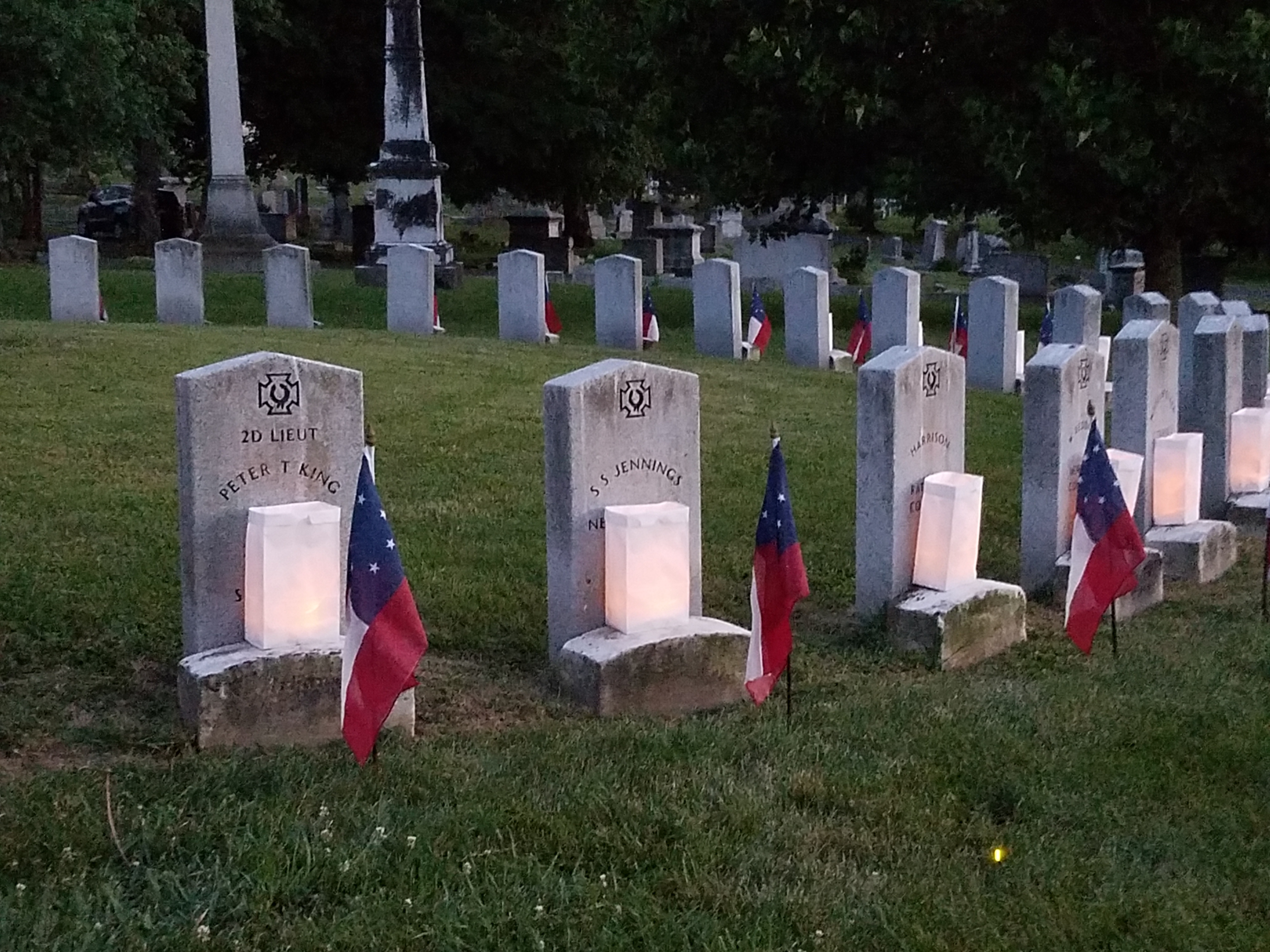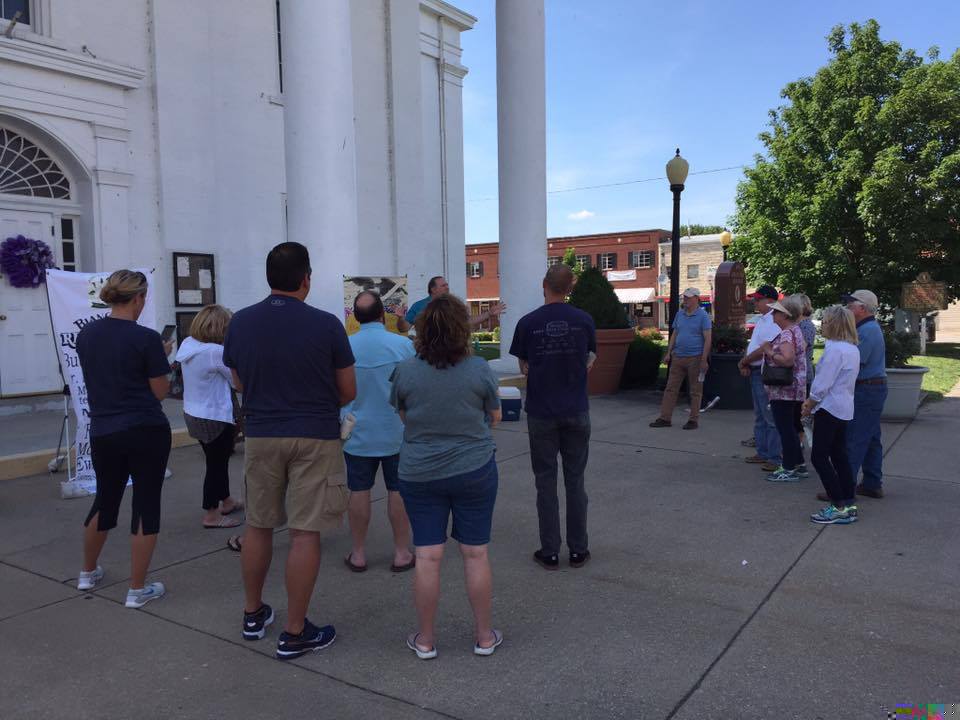The Civil War In Cynthiana, Kentucky

Emerging Civil War welcomes guest author Darryl Smith
Cynthiana and surrounding Harrison County, Kentucky, located just sixty miles south of Cincinnati along the Kentucky Central Railroad, was the scene of two engagements during the Civil War. During the early summer of 1862, John H. Morgan led his small cavalry force of Kentuckians, Georgians, and Texans on a raid that later had a direct impact on the Kentucky Campaign that same summer and fall. Morgan led his men to Cynthiana in mid-July, the town called later as the “best Rebel town of our Native State.”[i] Indeed, in 1861 and 1862 nine companies of infantry were raised in Harrison County that went into the Confederate Army.[ii] The northern portion of the county, made up of small hardscrabble farms and consisting of terrain that was not conducive to horse breeding, was more economically tied the North. The citizenry of Cynthiana proper was a mixture of sympathies, while the southern portion of the county, with its more open and rolling terrain allowing larger farms, mostly supported the South.
The 1862 battle saw Morgan’s men go up against a few hundred home guards supported by small detachments from the 7th and 18th Kentucky Infantry Regiments. The fighting took place within town, with most of Morgan’s 2nd Kentucky Cavalry trying to force its way across the Licking River near the covered bridge on the south edge of town while other parts of his command (consisting mostly of the Georgians and Texans) were dispatched to the east and west to come into town via several different routes. This deployment allowed the Confederates to surround the Federal forces, and resulted in the final portion of the fighting at the rail depot as well as near the court house (which still stands today).

The 1864 battle is composed of three distinct and separate phases over two days: a town fight early in the morning of June 11th (with similar results to the 1862 battle), a later morning battle that same day a mile north of the town near Keller’s Bridge on the Kentucky Central, and a third engagement to the east of town on the early morning of June 12th. In the first two phases the Confederates faced mostly Ohio “Hundred Days Men” from the 168th and 171st Ohio National Guard with some home guard and support from one hundred men of the 47th and 52nd Kentucky Infantry Regiments. In the final phase Morgan faced seasoned units totaling 2,400 men under the command of the controversial yet effective Stephen Burbridge.
Those who are not serious students of the war may not be aware of the two encounters that took place in Cynthiana, or understand the noticeable qualitative difference of Morgan’s 1862 soldiers as compared to his 1864 force. During the 1862 raid Morgan held a lessor command, but his troops were more disciplined and he had his brother-in-law, Basil Duke, to assist with operational planning. After the Great Raid in the summer of 1863, many of these experienced troopers were still in Northern prisoner of war camps, including Duke and other important officers. When Morgan went to Joe Johnston in early 1864 to obtain the core of his remaining experienced troopers for his new command (those that escaped after the Battle of Buffington Island), Johnston balked and would not release them to Morgan, and the quality of troops that went “bumming” was far inferior to his 1862 troopers. This lack of quality and discipline led to bank robberies, theft of local citizens (many of whom were sympathetic to the Southern cause), and the burning of Cynthiana’s business area which resulted in the loss of thirty-seven buildings (valued at 3.7 million in 2016 dollars). The raiders’ complete collapse on the morning of June 12th dealt by Burbridge’s Federals showed that Morgan was perhaps more focused on glory than adhering to the dictates of military order, and illustrates that while he was an effective raider, once brought to battle his tactical prowess was lacking.
 In 2016 the Cynthiana Battlefields Foundation was formed. It is the mission of the Foundation to preserve, interpret, and increase awareness of Cynthiana’s Civil War story. There are opportunities on the far horizon to preserve battlefield ground, and in the interim interpretation through tours and signage will help the battlefield visitor understand both engagements more fully. The Foundation welcomes new members and donations via their website (cynthianabattlefieldsfoundation.org). Help become a part of a true grassroots movement in the Bluegrass.
In 2016 the Cynthiana Battlefields Foundation was formed. It is the mission of the Foundation to preserve, interpret, and increase awareness of Cynthiana’s Civil War story. There are opportunities on the far horizon to preserve battlefield ground, and in the interim interpretation through tours and signage will help the battlefield visitor understand both engagements more fully. The Foundation welcomes new members and donations via their website (cynthianabattlefieldsfoundation.org). Help become a part of a true grassroots movement in the Bluegrass.
Darryl Smith serves on the Cynthiana Battlefield Foundation board and is enthusiastic about helping people understand this historic site and Kentucky’s Civil War history.
[i] Davis, William C., and Meredith L. Swenton, ed. Bluegrass Confederate: The Headquarters Diary of Edward O. Guerrant. Louisiana State University Press, 1999. Pg. 477.
[ii] Penn, William A. Kentucky Rebel Town: The Civil War Battles of Cynthiana and Harrison County. The University Press of Kentucky, 2016. Pg. 13.
Ed Bearss asserts that the Battle of Milton in 1862, near Murfreesboro, Tennessee, marked the tipping point for John Hunt Morgan & Confederate cavalry in the West. From that point onward the qualitative extremes that are embodied in the Cynthiana battles affected every campaign. From Milton onward, confederate cavalry in the West hemorrhaged assets that far outweighed their limited successes. Good post, thanks.
Thanks, Rhea! I would state that the two brigades on the Great Raid were solid fighting men, but definitely the period 1862-63 is the apex for Morgan’s command. Those 1863 men also robbed and even murdered on the Great Raid, but the frequency was reduced as compared to that ragtag mix of 1864!
Thanks, Rhea! I would state that the two brigades on the Great Raid were solid fighting men, but definitely the period 1862-63 is the apex for Morgan’s command. Those 1863 men also robbed and even murdered on the Great Raid, but the frequency was reduced as compared to the number of events caused by that ragtag mix of 1864.
There must be a glitch in the previous posted replies. Darryl Smith’s & Ohio at Perryville’s comments have somehow appear word for word the exact same.
My 3rd Great Grandfather John David Clidinst was captured at Keller’s Bridge.168th Ohio Infantry.2 Battle of Cynthiana
The 168th was actually involved in the fighting in town early on the morning of the 11th of June, 1864. The 171st Ohio was involved at Keller’s Bridge later that day. Perhaps your ancestor was captured in town? A friend of mine’s ancestor was a lieutenant in the 168th and was captured in town.
John David named one of his daughters Cynthiana.John David is buried in Kempton Cemetery Kempton Indiana